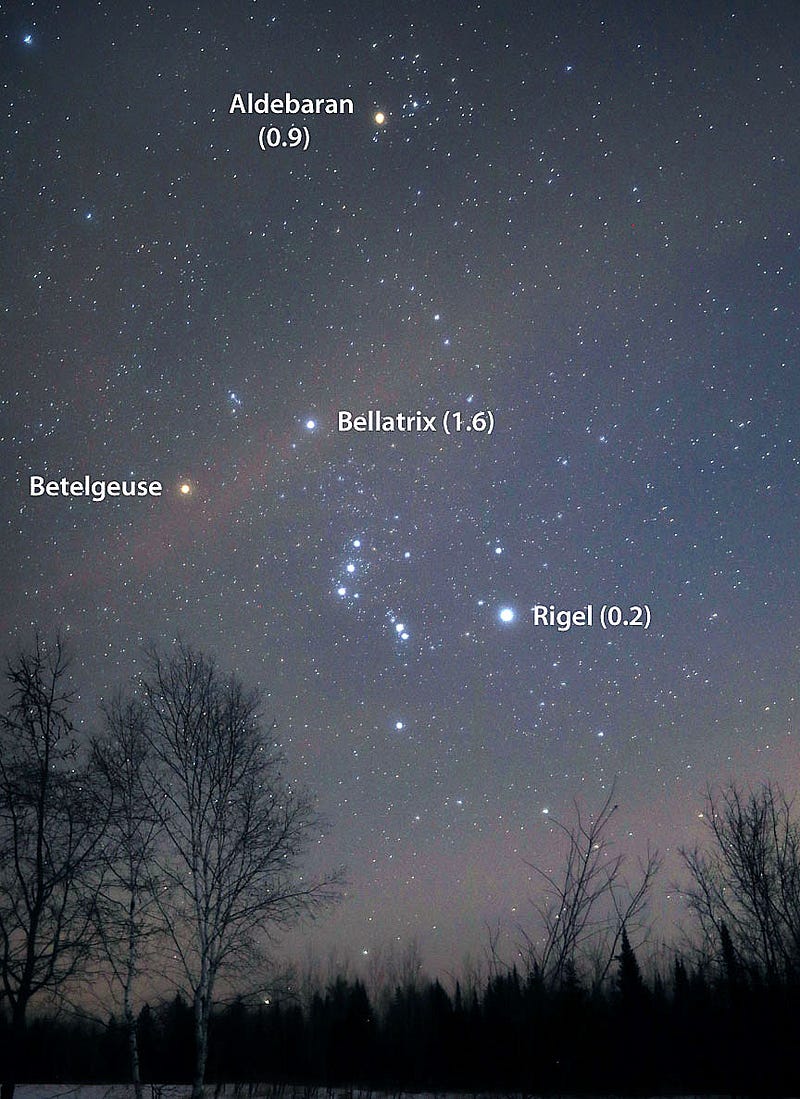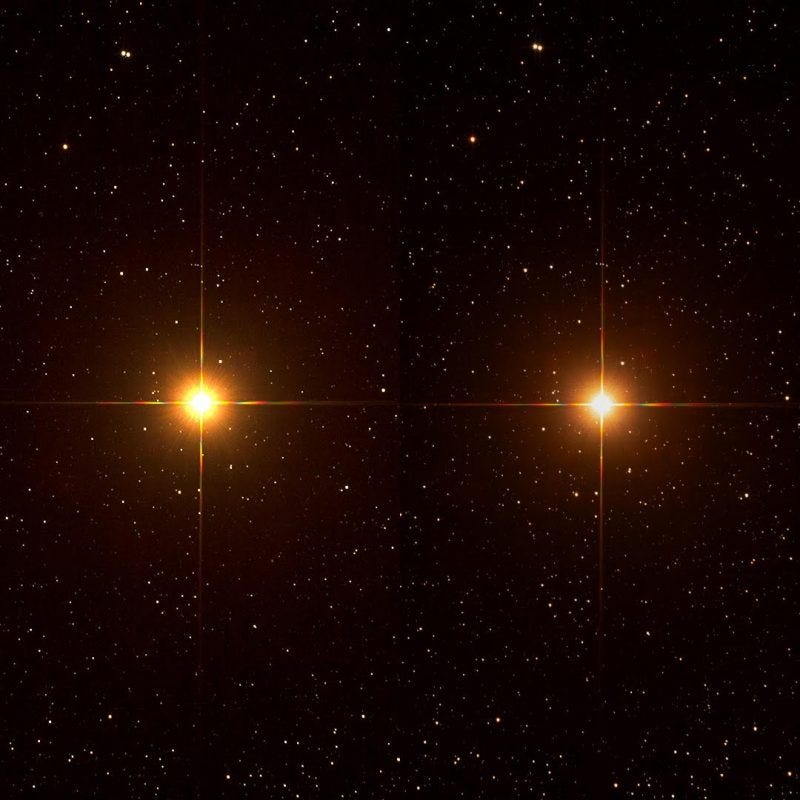Betelgeuse: The Dimming Red Supergiant and Its Mysteries
Written on
Chapter 1: Betelgeuse's Recent Brightness Decline
Recent observations have noted a significant reduction in Betelgeuse's brightness over the last four months, with a decline of approximately one magnitude. This has brought the star's luminosity to a level comparable to that of Bellatrix. Despite this notable dimming, experts are not anticipating an imminent supernova event.
Betelgeuse stands out in the night sky due to its striking orange-red hue and its position in the constellation Orion, situated less than ten degrees northeast of Orion's Belt. This star has captivated astronomers and stargazers alike since ancient times, making it one of the most observed celestial bodies. The advent of photoelectric measurements nearly a century ago has allowed for highly accurate tracking of its brightness fluctuations. Betelgeuse exhibits semi-regular variability, characterized by intricate oscillations stemming from two overlapping cycles—approximately 5.9 years and 425 days.
At its peak luminosity, Betelgeuse shines at around +0.3 visual magnitude, ranking it as one of the six or seventh brightest stars visible. Conversely, during its dimmest phases, the magnitude can plunge to +1.3, causing it to fall beyond the top twenty brightest stars observed with the naked eye.
Thanks to a wealth of photometric data, astronomers are generally prepared for Betelgeuse's periodic brightness variations. However, when these fluctuations exceed historical extremes, they spark intrigue among experts in variable stars. This has become particularly relevant given the recent, marked changes in brightness.
The dimming trend commenced in October 2019 when Betelgeuse's light began to wane. By December 7, its apparent magnitude had dipped to +1.12, the lowest recorded in the past 25 years. A further decline was noted on December 19, reaching +1.29—a level last seen in late 1926. The decline continued into January 2020, with new minima of +1.49 and +1.50 recorded on the 17th and 18th, placing Betelgeuse significantly dimmer than Aldebaran, which has a magnitude of +0.9.

A photograph from December 22, 2019, starkly illustrates Betelgeuse's reduced brightness relative to Aldebaran and only slightly outshining Bellatrix. Rigel, a much brighter star, is not included in this comparison.
From mid-January onward, the rate of light loss began to slow, yet the decline persisted. By the end of January, Betelgeuse reached a new unprecedented low of +1.614, nearly equaling the brightness of Bellatrix (V = +1.62), which is typically the third brightest in Orion. When comparing to September 2019, the red supergiant has dimmed by about one magnitude, appearing roughly 2.5 times less luminous than five months prior, with an even steeper drop of approximately 1.4 magnitudes from its peak brightness. Concurrently, its effective temperature has also decreased by nearly 100 degrees, from 3650 K to 3565 K.
If one were to interpret the current data as a uniform change across the star's surface, this might suggest an 8% reduction in Betelgeuse's radius in recent months. However, astronomers Guinan and Wasatonic caution that this unusual dimming could instead be linked to localized phenomena, such as the formation of obscuring dust in Betelgeuse's extensive atmosphere or the emergence of cooler areas on its surface due to vigorous convective motions.

The above images juxtapose Betelgeuse's brightness in February 2016 and December 31, 2019, highlighting the stark decline while background stars remain consistent.
There is speculation, and some hope, that this sudden decrease in brightness may herald an eventual supernova explosion for Betelgeuse. As a massive and highly evolved star, it is expected to explode as a Type II supernova, potentially shining as brightly as the full moon for a brief period, even visible during daylight. Nevertheless, this transformative event is likely still far off, with estimates suggesting it could occur in about 100,000 years.
The current brightness drop, while certainly unusual, may simply result from the overlapping minima of the star's two brightness cycles. If this is indeed the case, we could see an increase in brightness around March, coinciding with the completion of the 425-day cycle's minimum.
In the meantime, it is essential to delve deeper into the captivating nature of Betelgeuse, piecing together what is known and identifying gaps in our understanding through a concise overview of the extensive scientific research dedicated to this remarkable star.
This marks the first installment of a five-part series. Explore the remaining parts here:
All About Betelgeuse: How Far Is It?
Determining Betelgeuse's precise distance remains a challenging endeavor.
All About Betelgeuse: How Big Is It?
Current estimates suggest that the diameter of this red supergiant is around 1.4 billion kilometers.
All About Betelgeuse: A Boiling and Asymmetrical Star
Betelgeuse's structure is far from spherical; it resembles a pot continuously boiling.
All About Betelgeuse: Live Fast, Die Young
Ultimately, this supergiant will face a cataclysmic supernova event, leaving behind only a small remnant.